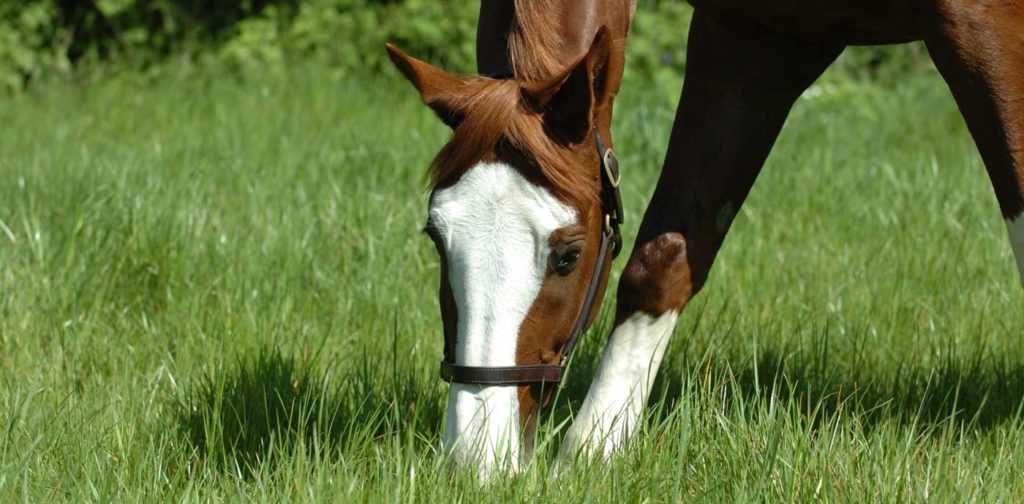The horse’s skin is perhaps the most forgotten organ of the body.
The skin provides a first line barrier against infections and plays a role in heat regulation and electrolyte balance through sweating. The general health of our horses is reflected in their skin. A healthy horse will have a glossy coat which shines without much elbow grease! Good nutrition will provide the necessary fat soluble vitamins and proteins to nurture the skin and provide a waterproof barrier, together with normal skin bacteria an effective defensive layer is formed. A horse that is generally unwell will have a dull staring coat as vital nutrients are utilised elsewhere in the body in an attempt to combat the stresses of disease.
The skin can only react to an insult, be it traumatic or infectious by reddening, swelling, thickening, and flaking, thus it can sometimes be difficult to determine the cause. What initially seems to be a few fly bites could turn out to be ringworm (fungal infection) and mud fever looks very like leukocytoclastic vasculitis. I would always advise early veterinary intervention if anything unusual is seen.
Skin rashes are not infrequently seen in equine practice and vary in severity and intensity from a few spots to full urticaria (rapid reaction) which sometimes looks like colic initially due to the intense irritation before bumps are seen. I once injected a horse with penicillin and within 5 minutes he was throwing himself around the box rolling and twitching. His skin rapidly erupted in hundreds of marble sized lumps. Fortunately, quick intervention with steroids helped limit the condition. That horse had developed a penicillin allergy which was duly noted in large red letters on his passport.
Before an allergic reaction occurs all animals have to be sensitised to an allergen. It is virtually impossible to see a true allergy in a young animal, most taking about 2 years to become established. Some reactions are seen almost immediately after the horse encounters the allergen and others may take several days to manifest. The allergen could be anything in the environment, from food stuffs including grasses to tree pollens to insect saliva. As with human allergies, the best strategy is to eliminate the cause. Equine allergies also respond well to steroid treatment (less to antihistamines) but this has obvious implications in a competition animal.
Sweet itch is the most easily recognised and managed allergy, by preventing the midges from biting the horse in the first place. Unfortunately, this is a type of reaction known as delayed hypersensitivity which means that it takes a few days to show, so the damage is done by the time the horse is seen rubbing and an itch-scratch-itch cycle is set up. Some horses react very badly to horsefly bites, wheals the size of eggs or larger appearing within a few hours. There is no predicting which horse is going to react, it is due to the individual’s immune system, but there is possibly some genetic predisposition. In both cases, I would advocate a good rug and the use of a permethrin fly repellent.
Where lumps appear under the numnah or rug it is usually due to irritants in washing powder; horses being even more sensitive than humans to detergents as their skin is usually protected by hair. Such cases are easily avoided by using only skin kind (hypoallergenic) products in the future. Similarly, only specially prepared animal shampoos should be used for washing horses; human preparations are too strong and could well be irritant. Washing up liquid even if it is kind to hands will strip the coat of all its natural oils at the very least, at most could cause a reaction.
Should your horse come out in bumps after being turned out in a new paddock it is best to avoid that pasture for about 3-4 weeks. Hopefully, by then the plant causing the problem will have stopped producing pollen, the usual culprit. It may be that there has been no change in management and the horse has still come out in lumps (usually before an important competition). This always surprises owners, however, their horse has become sensitised to something and it may be very difficult to identify the cause. These cases can be very frustrating and until recently vets have only had the options of using intradermal allergy tests for diagnosis, (clipping and injecting small amounts of allergen into the skin and measuring the lumps) or using blood tests designed for small animals. The introduction of an equine specific allergy blood test is a tremendous asset to veterinary surgeons allowing horses to be screened for food, environmental and insect allergens. It is then possible to produce bespoke immunotherapy for each individual horse.


